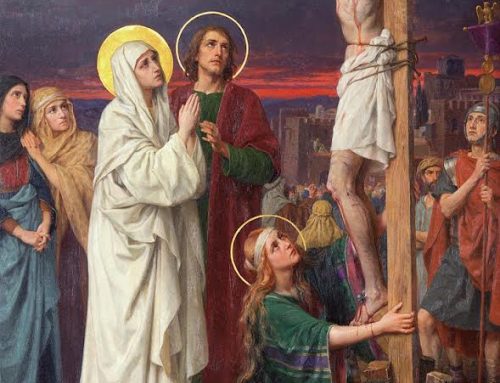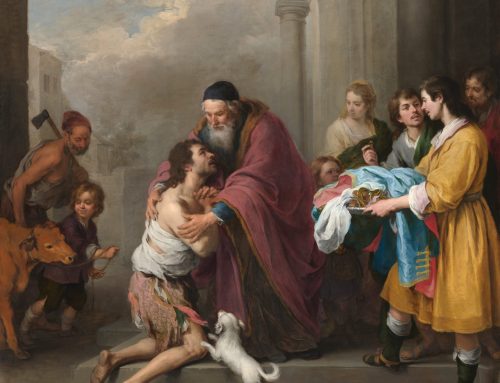
Why has the Catholic Church from the beginning cherished and venerated relics? The devotion to relics, solemnly approved by the Council of Trent in Session XXV, is supported by two principles of Catholic belief: honoring the dead in Christ and God’s choosing to use relics as instruments of healing in His Divine Providence.
The first principle, that by venerating relics we honor the dead in Christ, stems from our belief that bodies who have fallen asleep in Christ will be glorified and raised on the Last Day. For the pagan, a lifeless body of a saint may seem horrific. However, the Church teaches that bodies of martyrs and saints were temples of the Holy Spirit while they walked the earth. Their souls now live in heaven with Christ so there is a certain veneration due to the fact that their bodies in a way helped their souls to reach the beatific vision. The whole person, body and soul, strove to reach holiness through God’s grace, so it is proper and fitting that the body and soul are venerated. The Church joyfully awaits the glory that God will give to these remains at the Last Day.
And so it has been since the inception of the Church. The faithful gathered the bones of St. Ignatius of Antioch upon his death in 107 AD and placed them in linen, “as a priceless treasure, being left to the Holy Church by the grace which was in the martyr” (“Act. Mart.” 6). When St. Polycarp’s body was burned in 167 AD the Christians exhumed the bones they could find “as more precious than costly stones and more valuable than gold.” When in 258 AD St. Cyprian was about to be beheaded, the Christians cast towels and napkins before him, so that that the cloths might be soaked in his blood (“Act. Procons.” 5). We see from these early accounts that devotion to relics is not, as some would accuse, a pagan influence post Constantine.
The second principle, that God may honor the relics of the saints by making them instruments of healing and other miracles, also has its roots in the Early Church and most importantly, is revealed in Sacred Scripture. The Early Church Fathers appeal to the Old Testament, which describes Elijah’s bones as an instrument of resurrection for a deceased body. (Cyril of Jerusalem, “Catechetics”, xviii.). Second Kings records, “So Elisha died, and they buried him. Now bands of Moabites used to invade the land in the spring of the year. And as a man was being buried, lo, a marauding band was seen and the man was cast into the grave of Elisha; and as soon as the man touched the bones of Elisha, he revived, and stood on his feet” (2 Kgs. 13:20-21). This is an unequivocal biblical example of a miracle being performed by God through contact with the relics of a saint! Further, St. Luke records in Acts that the sick were healed by cloths which had touched the living body of St. Paul (Acts 19: 11-12). and others who were healed when St. Peter’s shadow passed by (Acts 5:14-16). Additionally, St. Matthew records the case of the woman cured of a hemorrhage by touching the hem of Christ’s cloak (Matt. 9:20-22). In the fourth century, St. Jerome declared, “We do not worship, we do not adore, for fear that we should bow down to the creature rather than to the creator, but we venerate the relics of the martyrs in order the better to adore Him whose martyrs they are” (Ad Riparium, i, P.L., XXII, 907). St. Ambrose, St. Augustine, and other post-Nicene Fathers leave ample evidence to this belief in the power of the relic as well.
Abuses most certainly have occurred throughout Church history with regard to relics, and the Church herself warns against this. In 1215, the Fourth Lateran Council in canon 62 prohibited relics to be sold or to be exposed outside of their cases or shrines and barred public veneration of new relics until their authenticity had been approved by the Pope (Mansi, “Concil.” tom. xxii. 1049–50). The Council of Trent in Session XXV reiterates these restrictions. The Council Fathers write, “And if any abuses have crept in amongst these holy and salutary observances, the holy Synod ardently desires that they be utterly abolished; moreover, in the invocation of saints, the veneration of relics, and the sacred use of images, every superstition shall be removed” (https://www.papalencyclicals.net/councils/trent/twenty-fifth-session.htm).
As the Council of Trent taught, there is great spiritual benefit derived from venerating and cherishing all sacred images, “not only because the people are thereby admonished of the benefits and gifts bestowed upon them by Christ, but also because the miracles which God has performed by means of the saints, and their salutary examples, are set before the eyes of the faithful; that so they may give God thanks for those things; may order their own lives and manners in imitation of the saints; and may be excited to adore and love God, and to cultivate piety” (https://www.papalencyclicals.net/councils/trent/twenty-fifth-session.htm).
Relics are usually venerated in public by being exposed in their cases, with burning lights nearby. They are often placed upon the altar at High Mass and incensed. The people may be blessed with them, and relics are often carried in procession to show honor and reverence for the saint to whom the relic belonged. A special Mass and office are permitted to Churches, which have an “insignis reliquia” of a saint named in the Roman Martyrology. Relics are an amazing treasure of the Church, a link to the past, yet a sign pointing us homeward.





Leave A Comment